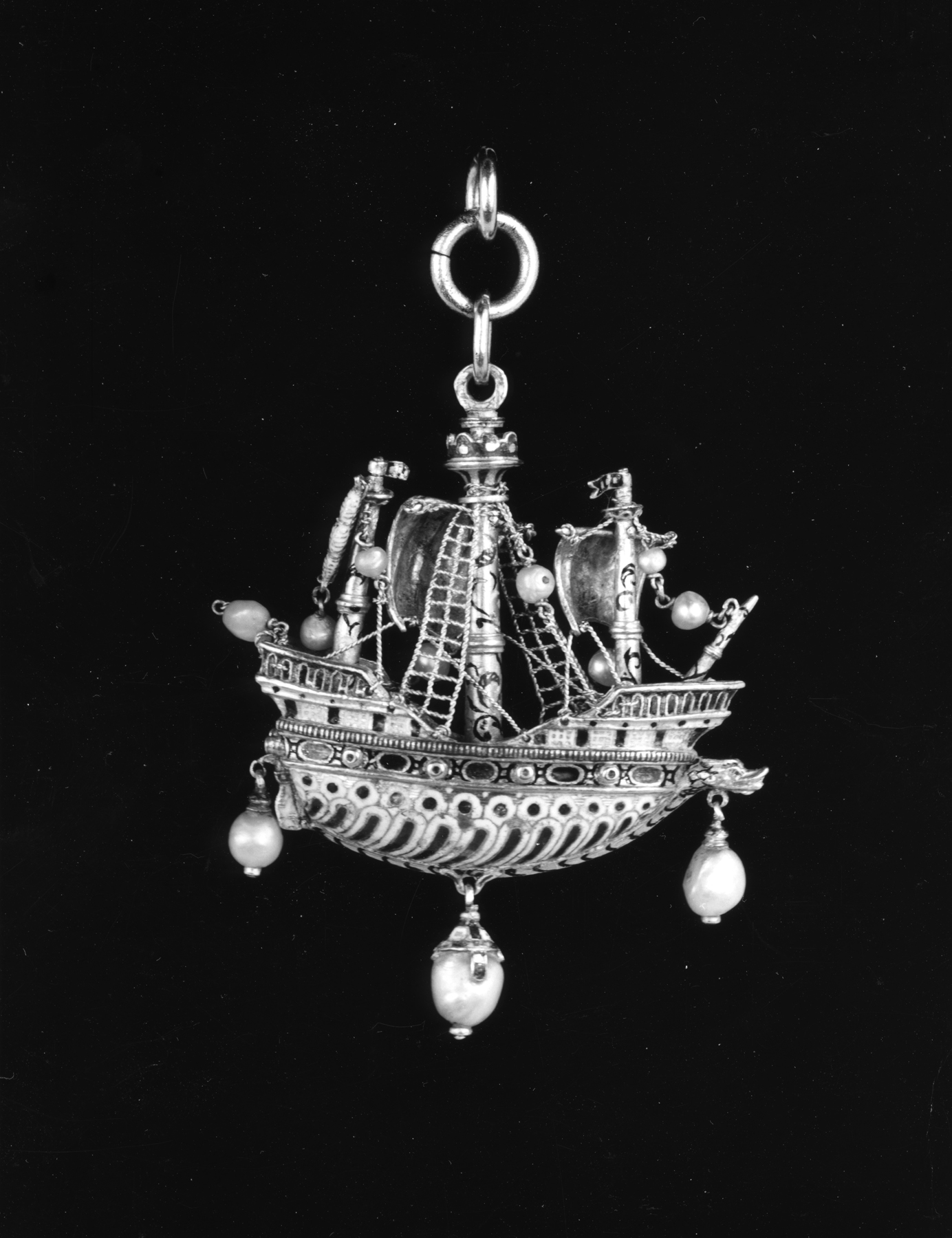Ship Pendant
(Renaissance Europe , 18th and 19th Centuries , Jewelry)
This pendant in the form of a fanciful ship was purchased as 16th-century Venetian, but an analysis of the enamel confirms that it is 19th-century.
Provenance
Provenance (from the French provenir, 'to come from/forth') is the chronology of the ownership, custody, or location of a historical object. Learn more about provenance at the Walters.
Ernest Guilhon de Bayonne Collection; Canessa Collection; Sale, New York, February 1917, lot 81; Henry Walters, Baltimore, 1917, by purchase; Walters Art Museum, 1931, by bequest.
Exhibitions
| 2006-2009 | Bedazzled: 5,000 Years of Jewelry from the Walters Art Museum. Frist Center for the Visual Arts, Nashville; The John and Mable Ringling Museum of Art, Sarasota; The Walters Art Museum, Baltimore. |
| 1979-1980 | Jewelry - Ancient to Modern. The Walters Art Gallery, Baltimore. |
| 1971-1972 | World of Wonder. The Walters Art Gallery, Baltimore. |
Conservation
| Date | Description | Narrative |
|---|---|---|
| 6/16/1982 | Examination | examined for technical study |
| 5/9/1991 | Examination | examined for condition |
Geographies
Italy, Venice (Place of Origin)
Measurements
H: 2 11/16 x W: 2 1/16 in. (6.83 x 5.24 cm)
Credit Line
Acquired by Henry Walters, 1917
Location in Museum
Not on view
Accession Number
In libraries, galleries, museums, and archives, an accession number is a unique identifier assigned to each object in the collection.
In libraries, galleries, museums, and archives, an accession number is a unique identifier assigned to each object in the collection.
44.475




